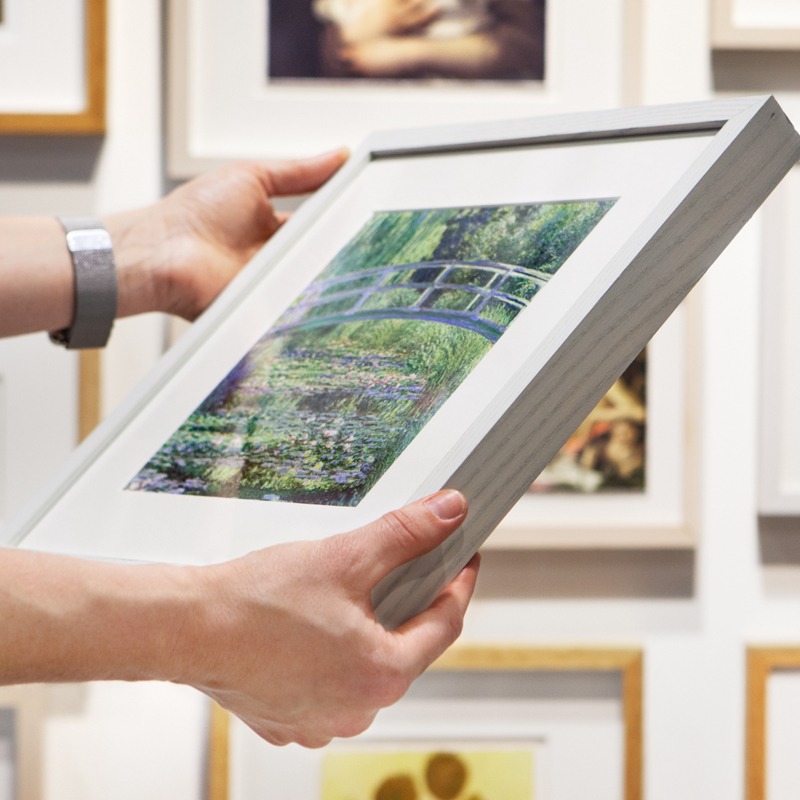John Constable, 'Weymouth Bay: Bowleaze Cove and Jordon Hill', 1816-17
About the work
Overview
This view is of Bowleaze Cove in Dorset looking west from Osmington. The Jordon stream trickles over the sand, with Furzy Cliff and Jordon Hill beyond. Thick clouds scud across the bright winter sky as the Downs slope to the sandy cove and sea. Constable suggests the waves rolling in to the beach with thick streaks of grey and white paint, which mirror the colour of the clouds.
Constable stayed at the vicarage in Osmington, a small village near Weymouth, during his honeymoon in 1816. The National Gallery’s painting is one of three oil versions of this view by Constable. The first may be the small oil sketch with a stormy sky (Victoria and Albert Museum, London) which was almost certainly painted outdoors from nature. The final, larger and more highly finished painting (Louvre, Paris) is developed from both the others and was exhibited at the British Institution in 1819.
Key facts
Details
- Full title
- Weymouth Bay: Bowleaze Cove and Jordon Hill
- Artist
- John Constable
- Artist dates
- 1776 - 1837
- Date made
- 1816-17
- Medium and support
- oil on canvas
- Dimensions
- 53 × 75 cm
- Acquisition credit
- Salting Bequest, 1910
- Inventory number
- NG2652
- Location
- Room 39
- Collection
- Main Collection
- Previous owners
- Frame
- 20th-century Replica Frame
Provenance
Additional information
Text extracted from the ‘Provenance’ section of the catalogue entry in Judy Egerton, ‘National Gallery Catalogues: The British Paintings’, London 2000; for further information, see the full catalogue entry.
Exhibition history
-
2013Clouds: Fleeting WorldsLeopold Museum22 March 2013 - 1 July 2013
-
2016John Constable: Observing the WeatherThe Lightbox13 February 2016 - 8 May 2016
Bibliography
-
1946Davies, Martin, National Gallery Catalogues: British School, London 1946
-
1946M. Davies, Paintings and Drawings on the Backs of National Gallery Pictures, London 1946
-
1952R. Beckett, 'Constable's Honeymoon', The Connoisseur, CXXIX/525, 1952, pp. 3-8
-
1959Davies, Martin, National Gallery Catalogues: British School, 2nd edn (revised), London 1959
-
1960G. Reynolds, Catalogue of the Constable Collection, London 1960
-
1976L. Parris, I. Fleming-Williams and C. Shields, Constable: Paintings, Watercolours and Drawings (exh. cat. Tate Gallery, 18 February - 23 April 1976), London 1976
-
1983M. Rosenthal, Constable: The Painter and His Landscape, New Haven 1983
-
1986A. Wiedmann, Romantic Art Theories, Henley-on-Thames 1986
-
1991L. Parris and I. Fleming-Williams, Constable, (exh. cat. Tate Gallery, 13 June - 15 September 1991), London 1991
-
1998J. Egerton, The British School, London 1998
-
2000Egerton, Judy, National Gallery Catalogues: The British Paintings, revised edn, London 2000
-
2001
C. Baker and T. Henry, The National Gallery: Complete Illustrated Catalogue, London 2001
About this record
If you know more about this painting or have spotted an error, please contact us. Please note that exhibition histories are listed from 2009 onwards. Bibliographies may not be complete; more comprehensive information is available in the National Gallery Library.






